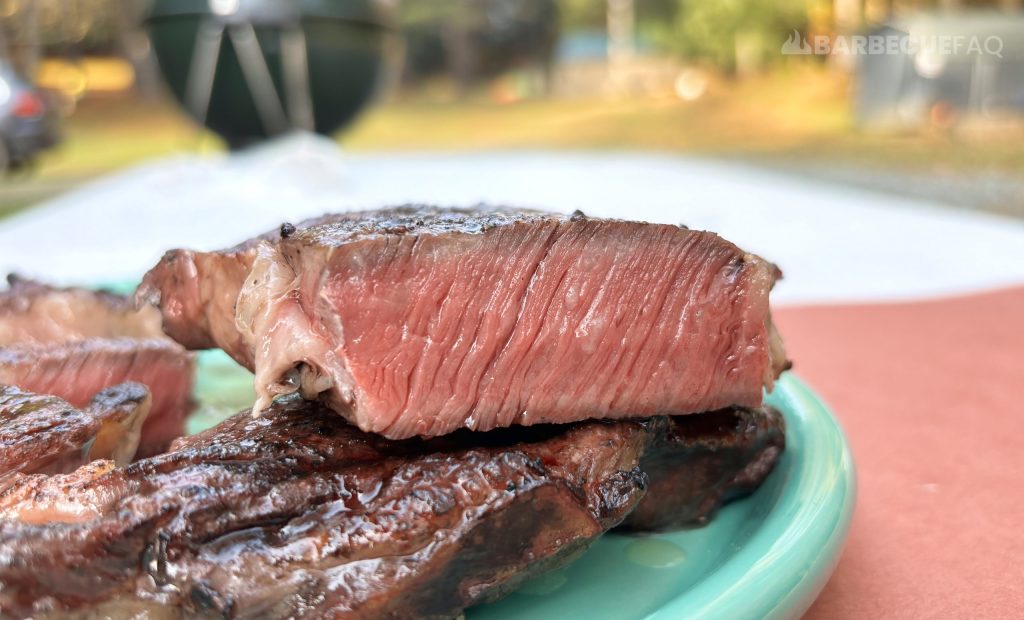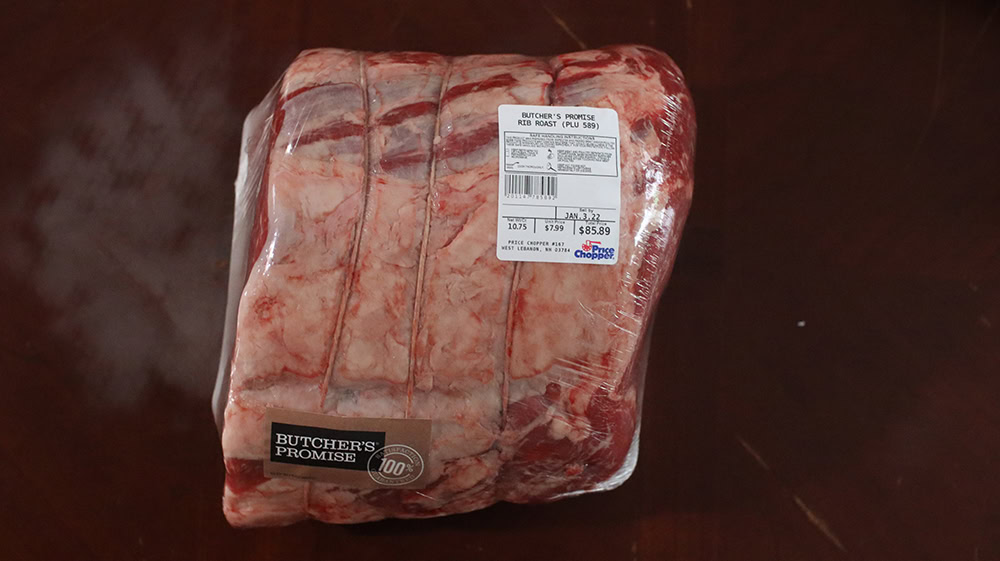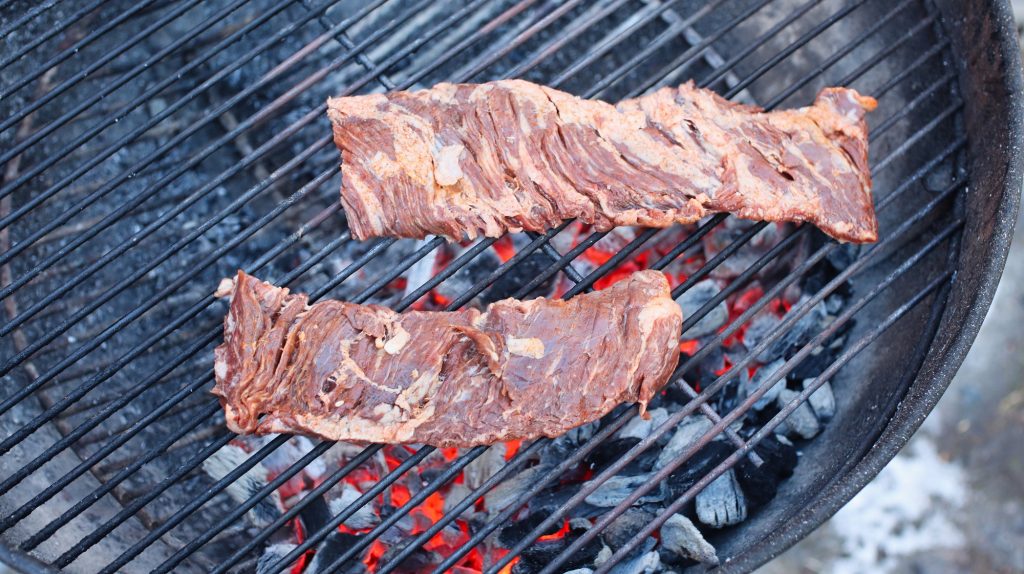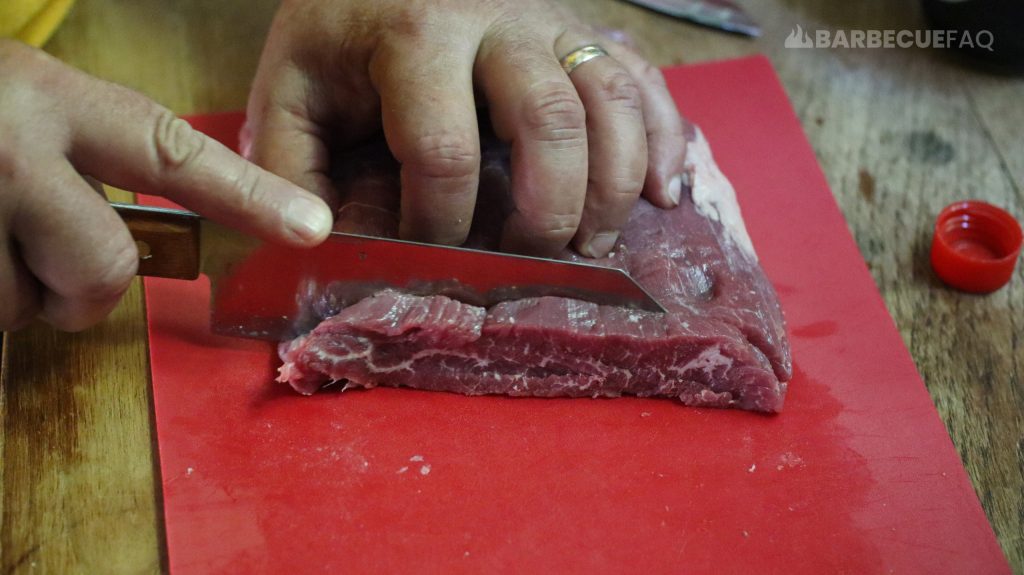Ribeye = Fattier, more flavorful, more tender, easier to control doneness.
T-bone = Looks cooler, strip side is less tender than ribeye, has a tenderloin that’s apt to overcook.
These Steaks Technically Contain the Same Main Muscle
That muscle is the “longissimus dorsi.”
This is the “eye” of the ribeye steak or the “strip” side of the T-bone.
The size of this muscle gets bigger towards the back of the cow – meaning this muscle is bigger on the T-bone, but it’s less tender.

Just to Show This Transition from Front to Back
At the front of the cow:
- The ribeye steak contains the Eye, Cap (spinalis), and Complexus.
- The eye muscle is small and surrounded by these muscles

Toward the middle of the cow:
- The eye muscle starts getting bigger.
- The cap muscle gets smaller and the complexus goes away and the steak is more uniform.
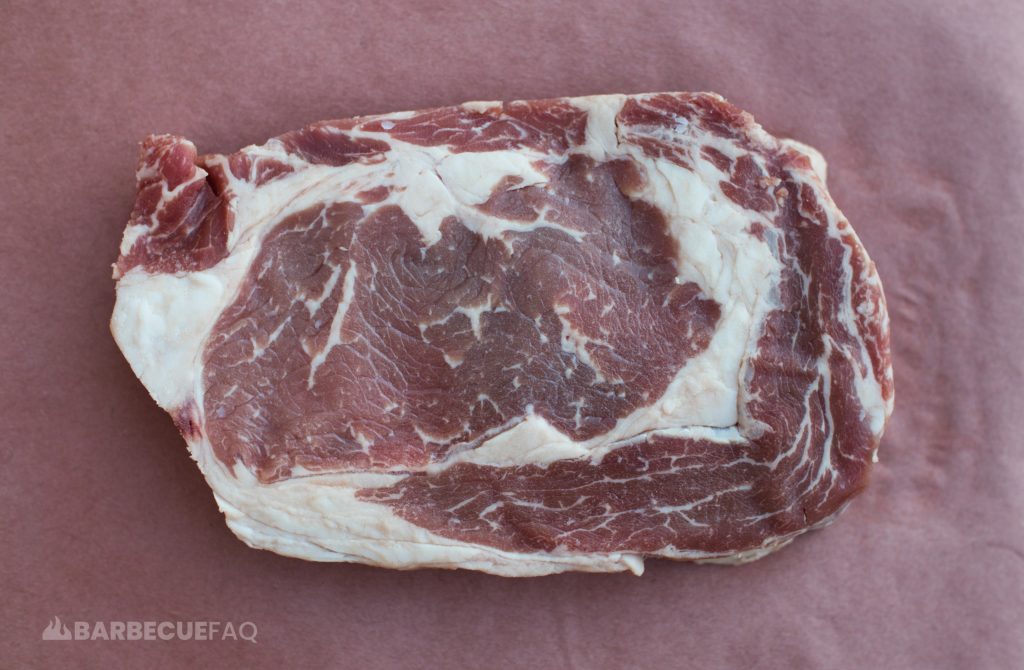
Toward the back of the cow (in the short loin for T-bone, NY Strip, etc.)
- The eye muscle is largest here and the surrounding muscles are gone.
- The muscle is leaner and on the opposite end of the bone the tenderloin starts to show up.

Ribeye Steak is More Tender Due to the Above Anatomy
The “rib” section of the cow isn’t used much for movement; Meaning, muscles in this area of the cow are more tender.
Tenderness will “decrease” the further you move from the center of the spine and into parts of the cow used for movement.
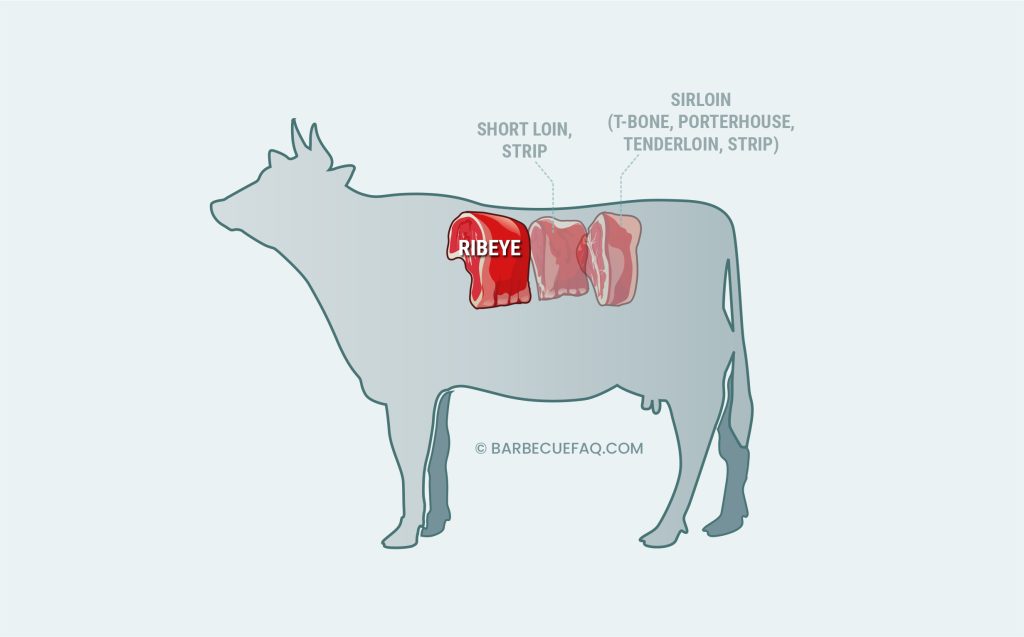
T-Bone Steak is Harder to Cook
This is solely due to the tenderloin muscle being so small.
If your goal is medium-rare for your steak – the tenderloin can be a literal morsel and you’re almost guaranteed to overcook it.

Even with a method like a reverse sear where you’re slowly bringing the temperature up – it’ll still overcook when you sear.
You’re basically better off buying a Porterhouse because they’re usually cut thicker and the tenderloin is bigger.
You can then apply a method like a reverse-sear and achieve perfect doneness.
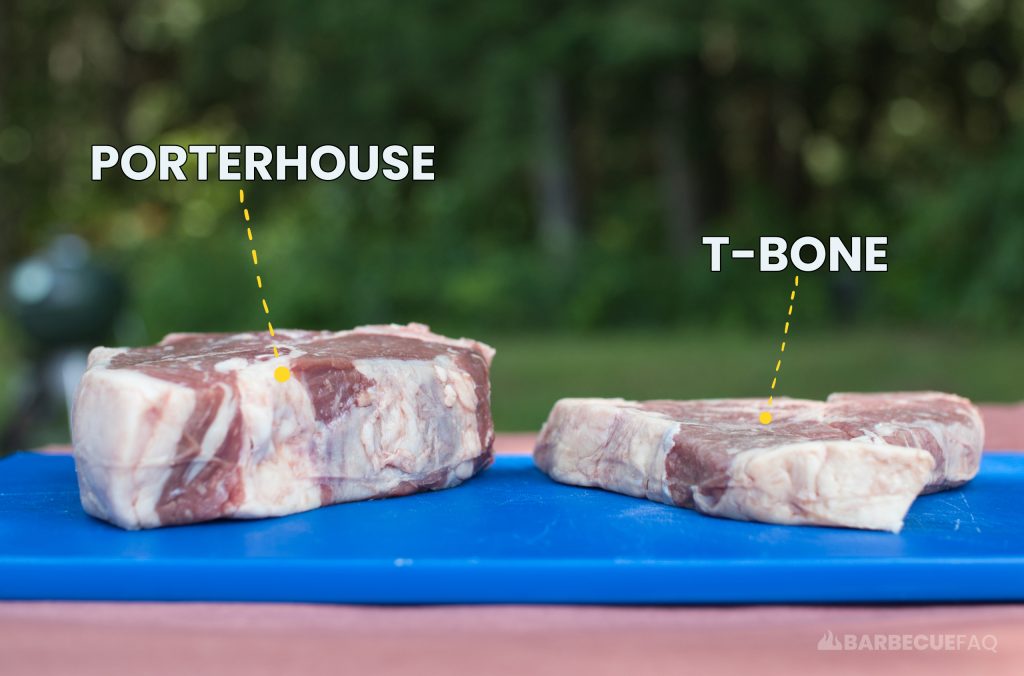
T-bone and porterhouse are the same steak only a Porterhouse MUST have a tenderloin that’s 1.25″ wide.
With Ribeye steak the intramuscular fat is distributed better and the muscles cook similarly. With a T-bone, the bone affects cooking due to insulation, poor conduction, etc.
